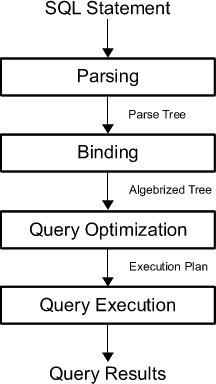A JOIN is a means for combining fields from two tables by. In a nutshell, you use ON for most things, but USING is a handy shorthand for the situation where the column names are the same. Man unterscheidet zwischen LEFT OUTER JOINs , RIGHT OUTER JOINs und FULL OUTER JOINs.

Jeder dieser JOIN -Typen zeichnet sich gegenüber dem INNER JOIN durch eine größere Ergebnismenge aus. By using joins , you can retrieve data from two or more tables based on logical relationships between the tables. If a column in the USING clause is referenced without being qualified by a table name, the column reference points to the column in the first (left) table if the join is an INNER JOIN or a LEFT OUTER JOIN. SQL join: where clause vs. Neben dem Namen des anzuwendenden Joins , man unterscheidet vier Join -Arten, muss zusätzlich eine ON-Bedingung angegeben werden.
In this tutorial, we will show you how to use the INNER JOIN clause. If the total is not null, the value is returned. The final thing is the OUTER JOIN clause. Using the LEFT OUTER JOIN preserves the rows in the left table so that you see all customers, even those who do not have invoices. OUTER JOINs can be nested inside INNER JOINs in a multi-table join , but INNER JOINs cannot be nested inside OUTER JOINs.
The CROSS APPLY and OUTER APPLY joins are available in Oracle, but they have only been supported for use in your application code from Oracle 12c onwar so you are unlikely to see them in application code for some time. The answer may be related (or even the same) but the question is different. To get item name, item unit columns from foods table and company name, company city columns from company table, after joining these mentioned tables, with the following condition - 1. Die Verbindung der Tabellen erfolgt mit speziellen Schlüsselwörtern. The easiest and most intuitive way to explain the difference between these four types is by using a Venn diagram, which shows all possible logical relations between data sets. In short INNER JOIN = JOIN (note that different databases have different syntax for their JOIN clauses).
Full Join means that you want all records from both tables, right? Since some of the fields have common names across the tables, you might want to use coalesce to. Let us take an example of a customer table.
I have updated customer table that contains latest customer details from another source system. I want to update the customer table with latest data. The cross join does not itself apply any predicate to filter rows from the joined table. The of a cross join can be filtered by using a WHERE clause which may then produce the equivalent of an inner join. You can also perform a join between two tables using an explicit equality test in a WHERE clause, such as WHERE t1.
The fourth type of implementing the inner join is using ‘natural join ’ clause. The ANSI standard provides another option to write less code if we want to join our tables using all of the columns that have the same name in both sources. The only condition to use the natural join clause is the column_name of joining condition should be same in. However, if there is no match in the second table it returns a null value. How to Use LEFT OUTER JOIN in SQL.
An INNER JOIN returns a result set that contains the common elements of the tables, i. If several columns have the same names but the datatypes do not match, the NATURAL JOIN clause can be modified with the USING clause to specify the columns that should be used for an EQUIJOIN. Thir specify a join condition after the ON keyword of the INNER JOIN clause. USING Clause is used to match only one column when more than one column matches.
The join condition specifies the rule for matching rows between the main table and the table appeared in the INNER JOIN clause. Assuming that you want to join two tables tand t2. The following statement illustrates how to join two tables tand tusing the INNER. To construct a self join , you select from the same table twice by using the SELECT statement with an inner join or outer join clause. This will be covered in greater detail the lesson on making queries run faster , but for all you need to know is that it can occasionally make your query run faster to join on multiple fields, even when it does not add to the accuracy of the query.
Below are the example tables contain one column which has matching rows. Learn about the LEFT OUTER JOIN vs. Often we may need to update a column in a table based of another column in another table.
Hey, I am Pranay Rana, working as a Team Leadin MNC.
Keine Kommentare:
Kommentar veröffentlichen
Hinweis: Nur ein Mitglied dieses Blogs kann Kommentare posten.